How to Install a Breaker in a Live Panel
Breaker Box Safety: How to Connect a New Circuit
Add a new circuit to your home's wiring
Every editorial product is independently selected, though we may be compensated or receive an affiliate commission if you buy something through our links. Ratings and prices are accurate and items are in stock as of time of publication.
![]() Time
Time
A full day
![]() Complexity
Complexity
Advanced
![]() Cost
Cost
$51–100
Introduction
Adding a new circuit can be a daunting and even dangerous job. We show you how to do it with step-by-step instructions and important, life-saving safety tips.
Tools Required
Materials Required
- AFCI circuit breaker
- Cable clamp
- electrical staples
Know What You're Getting Into
We believe in safe DIY. That's why we've always been reluctant to show readers how to open a breaker box and connect a new circuit. Even with the power shut off, there's a chance you could touch the wrong parts and kill yourself. But then we figured if we didn't show you, you'd just go search it somewhere else. And that scared us even more. So we're going to walk you through the process, showing you the safest way to open the breaker box, wire a new breaker, and test your work.
Opening the main circuit breaker panel box and adding a circuit is actually pretty easy. You only have to connect three wires to add a circuit, and each circuit wire is color-coded. But there are some safety precautions, and if you ignore them, you could kill yourself. Really. If you follow our safety steps in order and to the letter, you'll be fine. But if at any point you're unsure how to proceed or feel uncomfortable with the project, call an electrician.
Stay away from the large wires and lugs. They're always live, even with the main breaker (service disconnect) shut off. If you touch them, you could die. Cover the live areas with a cardboard shield to prevent accidental contact while adding a circuit. If you have any doubts about which areas stay live, contact an electrician. There's a reason awareness of electrical issues is a key step in preventing fires in the home.
Watch this video to see the safe way to connect a new circuit yourself:
ⓘ
Get the Right Parts and Tools
Before you go shopping, open the door of your breaker box and copy the manufacturer's name, the box model number, and the style numbers of the breakers that are approved for your box. Then buy one of those breakers. If your home center doesn't sell the right model or brand, you'll have to go to an electrical supplier. You cannot install a circuit breaker style that isn't specifically approved for use in your box — even if it fits inside the box.
While at the store, pick up a few 1/2-inch plastic snap-in cable clamps to secure the new cable. They're safer than metal clamps because you don't put your hand in the panel to install them.
If you need a reminder about how bad some amateur electrical can be, check out this list of the most common electrical code violations.
You have to shut off the power to your whole house, so you'll need a powerful work light. An LED headlamp is also a great idea so you won't have to juggle a flashlight, wire strippers and a screwdriver. Round up a utility knife, wire strippers, electrical tape, a circuit tester (not a voltage sniffer), and a flat-blade screwdriver or No. 2 square-drive tip for your multi-bit driver. These are the two must-have tools for DIY electrical work.
Project step-by-step (12)
Step 1
An Inside Look at Your Main Breaker Panel
Your main breaker panel might not be exactly like the one here. With any panel, find the large cables and the lugs they're connected to. They're the parts that are always live, even when the main breakers are switched off. Here's how to know what's what:
- A: Main lugs. They're always live — even when the main breaker is off. NEVER TOUCH THEM.
- B: Main cables. The black ones are always live. And although they're insulated, avoid touching them.
- C: Main breaker. Always switch it off before removing the panel's cover.
- D: Breaker. The hot wire (usually red or black) from each circuit connects to a breaker. If you're installing an AFCI breaker (as shown on the following pages), you'll also connect the neutral wire to the breaker.
- E: Breaker bus. Distributes power from the main breaker to the individual circuit breakers. Each breaker snaps onto the bus.
- F: Neutral bus. All ground and neutral (white) wires connect here. If you're installing a standard breaker, the neutral (white) wire connects here, too. If you're installing an arc-fault circuit interrupter (AFCI) breaker, you'll connect the neutral to the breaker and run a "pigtail" wire to the neutral bus.
- G: Breaker space. This panel has room for three more breakers. You can install your new breaker in any open space.
Plus: Check out these 11 real-life epic electrical fails.

Step 2
Your Main Breaker Panel Might Look Like This
The photo shows a different configuration where the large cables and lugs are located on the right-hand side of the circuit breaker box, rather than at the center.
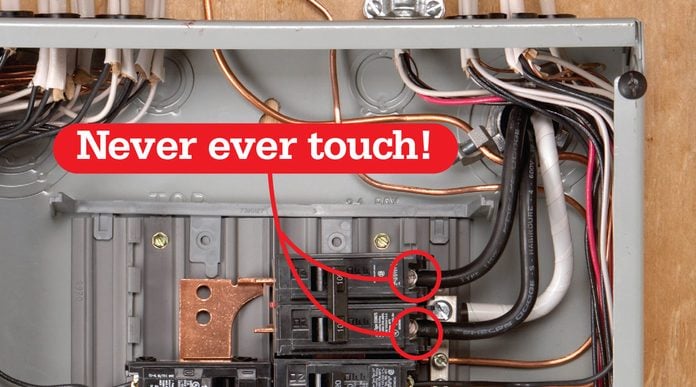
Sign Up For Our Newsletter
Complete DIY projects like a pro! Sign up for our newsletter!
Do It Right, Do It Yourself!
![]()
Step 3
Power Down, Then Remove The Cover
- Turn off all computers in the house before you switch off the power.
- Then switch off the main breaker (the service disconnect).
- Remove three of the panel box cover screws.
- Then hold the cover securely while you remove the fourth screw.
- Pro tip: If it slips while you're removing screws, it can damage the breaker handles.

Step 4
Test to Make Sure it's Dead
- It's dangerous to assume the power is really off just because you've flipped the service disconnect to the off position. Be absolutely certain all the power is off.
- There's a slim chance that the service disconnect didn't work properly, keeping power to some breakers.
- So test each and every breaker to make sure it's really dead.
- Touch one lead of a test light to the neutral bus and the other lead to the screw on each breaker.
- If the test light lights up, stop and call an electrician.
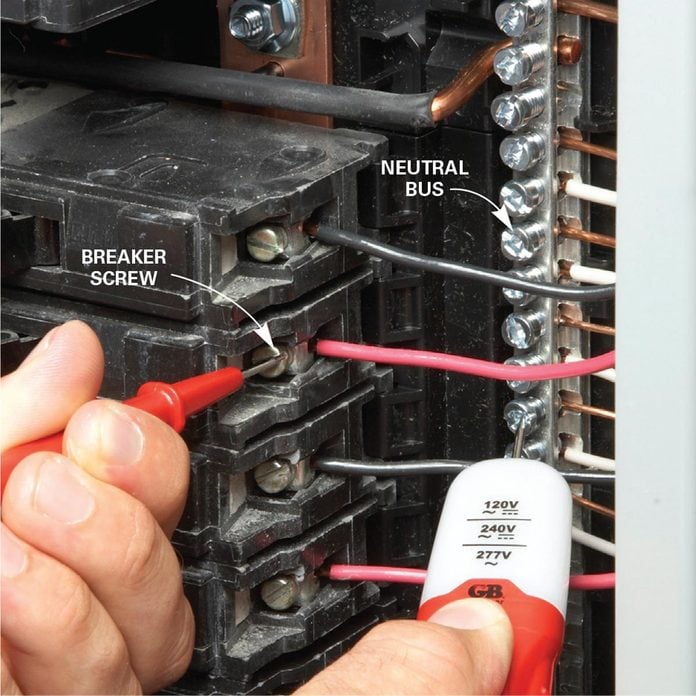
Step 5
Insert a Cardboard Safety Shield
- You can insert the new cable into any knockout on the top, bottom, or sides of the panel box.
- Find the least congested area and remove one small knockout.
- Jam a needle-nose pliers or a short screwdriver into the knockout to bend it down.
- Then grab the "slug" with your pliers and twist it back and forth until it breaks off.
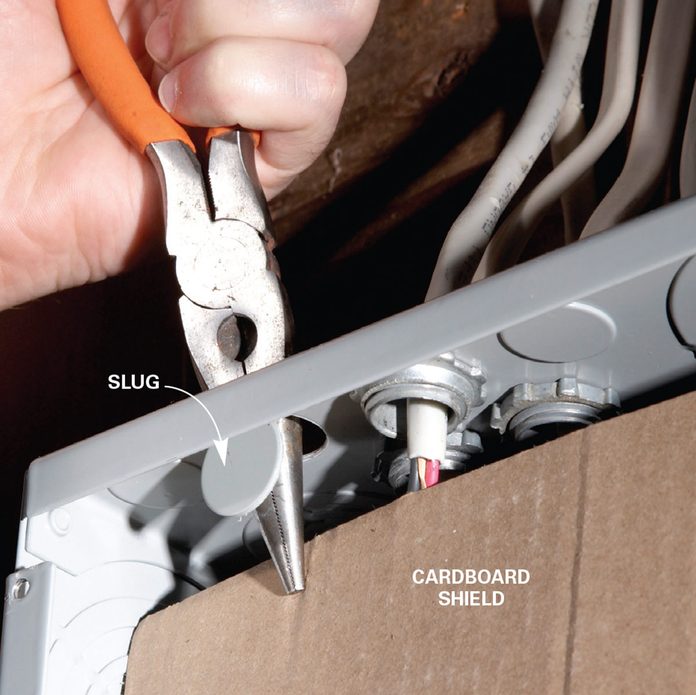
Step 6
Run the Cable Through the Clamp
- Snap in a plastic clamp and then feed in the cable.
- Pro tip: The screw-style ones shown aren't as easy to use.
- Hold the cable up to the box to determine how much of the outer jacket you should strip off.
- Slice off the jacket and remove the paper insulator.
- Then wrap the ends of the loose wires with electrical tape to prevent them from touching a live portion of the box.
- Pro tip: Tape the wires together so one doesn't stray behind the cardboard.

Step 7
Push Until the Jacket Enters the Clamp
- Keep pushing the cable into the clamp far enough to get at least 1/4-inch of the outer jacket inside the box.
- Then secure the cable outside the box with an insulated staple within 12 inches of the clamp.
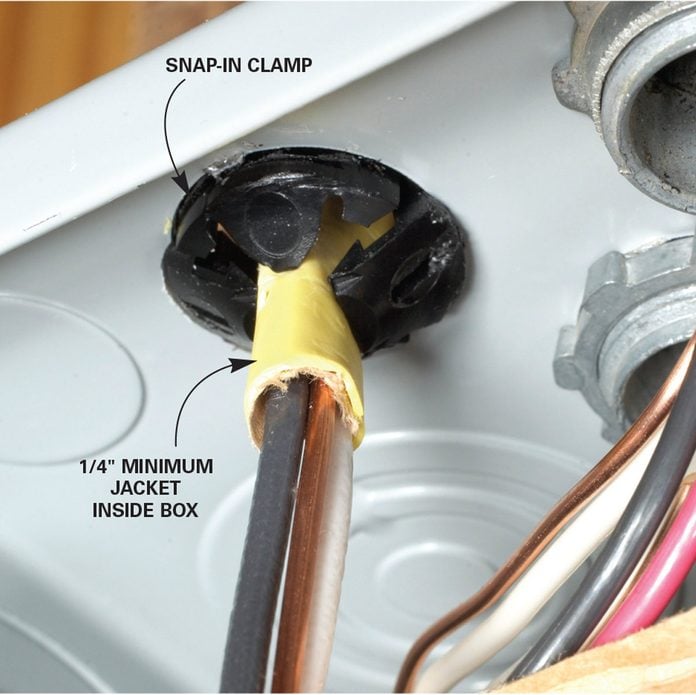
Step 8
Route the Cable and Install the Breaker
- Install the breaker by slipping the tab into the hook.
- Then snap the breaker into place, forcing the slot onto the bus.
- Pro tip: We're using an AFCI breaker.
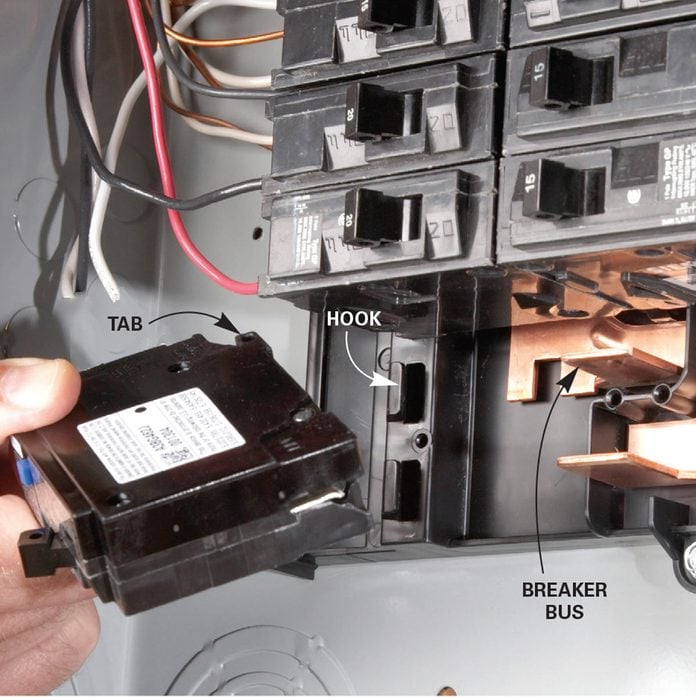
Step 9
Strip and Clamp
- Neatly route the black and white wires to the empty breaker space.
- Attach the wires to the breaker and then snap it into the box, or install the breaker first and insert the wires last.
- Pro tip: Just be aware that wiring an AFCI-style breaker is different from wiring ordinary breakers.
- The neutral (white) from the new cable attaches to the AFCI
- Strip off 5/8-inch of insulation from the white and black wires and insert them into the AFCI terminals.
- Tighten until snug.
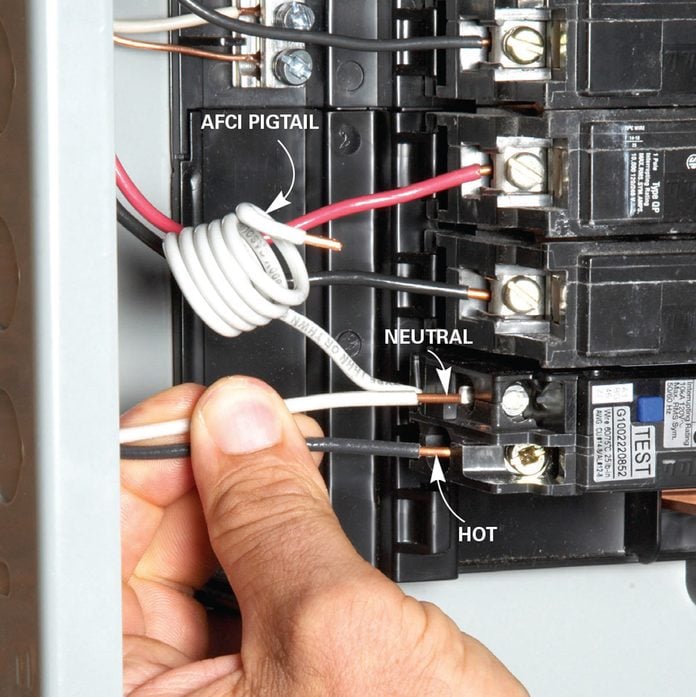
Step 10
Ground and Pigtail go to the Neutral Bus
- On a main panel, you connect the ground wire from the new cable and the neutral (white) pigtail from the AFCI to the neutral bus.
- Route the AFCI neutral pigtail and ground wires to empty screws on the neutral bus and tighten.
- If you're installing a breaker on a sub-panel, place the neutral and ground on separate bus bars.

Step 11
Test the Installation and Finish the Job
- Remove the panel box cover plate knockout that corresponds to the slot where you installed the new breaker (bend it back and forth until it breaks off).
- Then install the cover and turn on the main breaker.
- Switch the new AFCI to "ON."
- Wait a few seconds and press the "TEST" button.
- The breaker should trip.
- If it doesn't trip, refer to the package instructions for troubleshooting or call an electrician.

Step 12
How to Plan a New Branch Circuit
- You can usually mix lighting and receptacles on the same circuit. But it's not a good idea to place lighting and receptacles in the same room on a single circuit. If the breaker trips, you'll lose all the light fixtures and receptacles at the same time.
- If you're wiring living areas, you can install 10 to 13 lights and receptacles on a single 15-amp circuit. Locate the receptacles so you're never more than six feet away from one on each wall.
- Run a separate 15- or 20-amp circuit for each of these watt-sucking appliances: garbage disposer, dishwasher, microwave, vent hood, trash compactor, and space heater.
- Run a separate 20-amp circuit to each bathroom and laundry room. Install a minimum of two 20-amp circuits for the kitchen. Protect the receptacles with a ground-fault circuit interrupter (GFCI) breaker or GFCI-style receptacles.
- Use 12-gauge cable for 20-amp circuits and 14-gauge for 15-amp. Many cable manufacturers color-code the outer jacket of their cable, but the color schemes are not universal. So always double-check the wire itself to be sure.
- New branch circuits to all "living areas" (bedroom, living room, family room, den, dining room, library, sunroom, closet, hallway, and similar locations) must be connected to an arc-fault circuit interrupter (AFCI). AFCI breakers are pricey, so you may be tempted to buy an ordinary $5 breaker. Don't. The electrical inspector will just make you change it out.
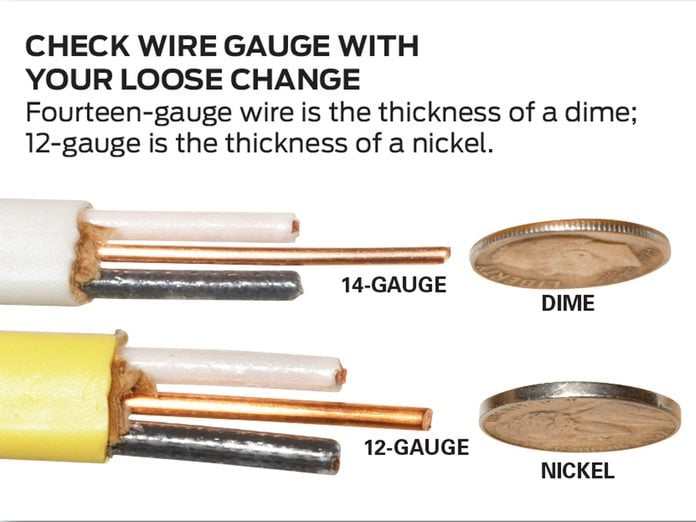
How to Install a Breaker in a Live Panel
Source: https://www.familyhandyman.com/project/breaker-box-safety-how-to-connect-a-new-circuit/